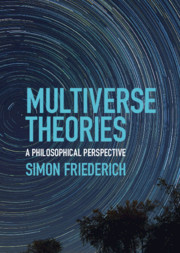Book contents
- Frontmatter
- Dedication
- Contents
- Preface
- Part I Setting the Stage
- Part II Fine-Tuning for Life and the Multiverse
- Part III Testing Multiverse Theories
- 7 Testing Multiverse Theories: Theoretical Approach
- 8 Testing Multiverse Theories: Approaching Practice
- 9 Puzzles of Self-Locating Belief
- Part IV Wider Still andWilder
- References
- Author Index
- Subject Index
7 - Testing Multiverse Theories: Theoretical Approach
from Part III - Testing Multiverse Theories
Published online by Cambridge University Press: 07 January 2021
- Frontmatter
- Dedication
- Contents
- Preface
- Part I Setting the Stage
- Part II Fine-Tuning for Life and the Multiverse
- Part III Testing Multiverse Theories
- 7 Testing Multiverse Theories: Theoretical Approach
- 8 Testing Multiverse Theories: Approaching Practice
- 9 Puzzles of Self-Locating Belief
- Part IV Wider Still andWilder
- References
- Author Index
- Subject Index
Summary
This chapter turns to the prospects for empirically testing specific cosmological multiverse theories such as the landscape multiverse scenario or cyclic multiverse models. The most commonly pursued strategy to extract concrete empirical consequences from specific multiverse theories is to regard them as predicting what typical multiverse inhabitants observe if the theories are correct, where "“typical” is spelled out as “randomly selected from some suitably chosen reference class.” I scrutinize a proposal by Srednicki and Hartle to treat the self-sampling assumption and the reference class to which it is applied as matters of empirical fact that are themselves amenable to empirical tests. Unfortunately, this proposal turns out to be incoherent. A much better idea, which coheres well with the intuitive motivation for the self-sampling assumption, is that we should make this assumption with respect to some reference class of observers precisely if our background information is consistent with us being any of those observers and neutral between them. I call this principle the “background information constraint” (BIC) and point out that it at least formally solves the problem of selecting the appropriate observer reference class.
Keywords
- Type
- Chapter
- Information
- Multiverse TheoriesA Philosophical Perspective, pp. 97 - 113Publisher: Cambridge University PressPrint publication year: 2021



